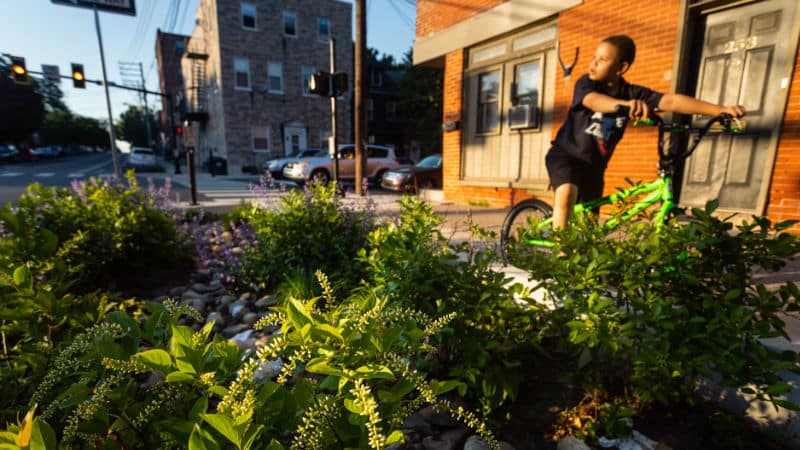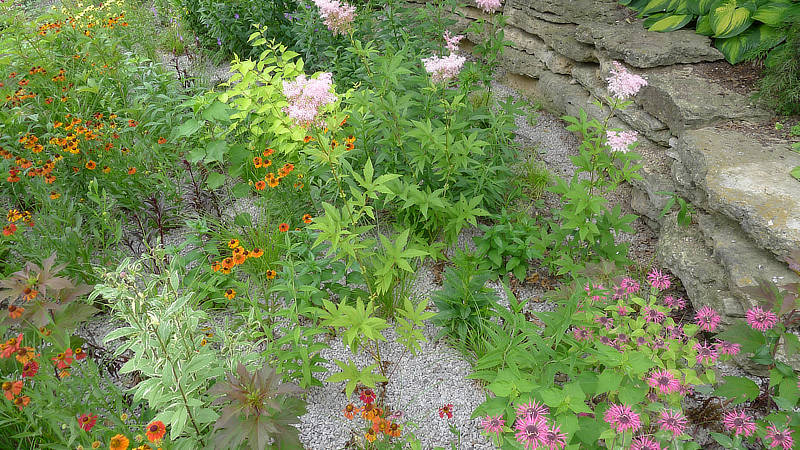How Rain Gardens Can Reduce Flooding and Water Use Around Your Property

By Lisa Blazure
Have you ever donned rain gear, stood outside your house during a heavy rainstorm, and watched how the water flowed across your property? For most people, the answer is likely not. But doing so can be enlightening if you’re concerned about your local streams and want to learn how your property can reduce local flooding and save on water use.
Most homes use gutters, downspouts, and grading to efficiently transport water away from buildings. In suburban and urban areas, this water is often collected in the stormwater system and eventually discharged into local streams. As a result, small streams can flood more frequently and may be degraded by the flush of pollutants transported in the water.
According to the Environmental Protection Agency, “Polluted runoff is one of the greatest threats to clean water in the U.S.”
In high-density areas, natural lands have been replaced with impervious surfaces such as roofs, driveways, parking lots, and roads. Such landscapes can’t infiltrate as much rainwater. Instead, the water runs off the land. This means less rain reaches the underground aquifers that allow household taps to keep flowing. Water loss in this way is contributing to a nationwide fall in groundwater levels, and even seemingly water-rich areas like the East Coast are affected. The good news is that landowners and developers can mitigate this issue by installing rain gardens.

A rain garden is not just a functional solution but also a beautiful addition to lawns and yards. It’s a low area that collects rainwater and allows it to soak into the ground. They are strategically located to capture water that runs off driveways and roofs. They can be designed to also capture visual interest with rock features, curving shapes, and countless combinations of attractive native plants that support wildlife.
Commonly used landscaping plants are often not native to the area. Although they are beautiful, they offer very little to local wildlife because they are not host plants for native insects. Rain gardens create the opportunity to incorporate more native plants into landscaping. These gardens supply food sources, such as nectar, pollen, and leaves, benefiting not just bees and butterflies but also local birds that need insect larvae during nesting and rearing season. Because these areas are frequently wet, homeowners have additional options for plant selection and can grow plants that would not thrive in other areas of their properties.
With proper planning, a small rain garden can be built in a weekend. The first step is to carefully observe where water flows on a rainy day and select a spot in the yard to divert and collect the water. Typically six to twelve inches of soil is removed, and soil can be mixed with sand or compost to increase water infiltration. It’s best to choose a selection of native plants that are suitable for the property’s hardiness zone, light conditions, and aesthetics. Once established, rain gardens are relatively low maintenance.

Spring has finally returned, and with it comes April showers and a resurgence of activity in the natural world. Consider how your property interacts with the local watershed and wildlife community. Building a rain garden is one small step toward reconnecting your yard with nature.
Learn More
- For rain garden instructions and tips, check out EPA’s “Soak Up the Rain” page.
- Downspout planters are another way to reduce rainwater runoff. Learn more about them from Penn State Extension.



